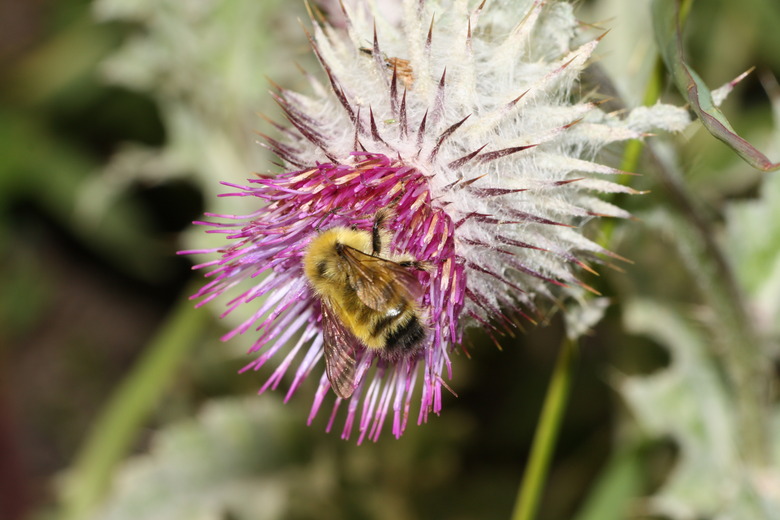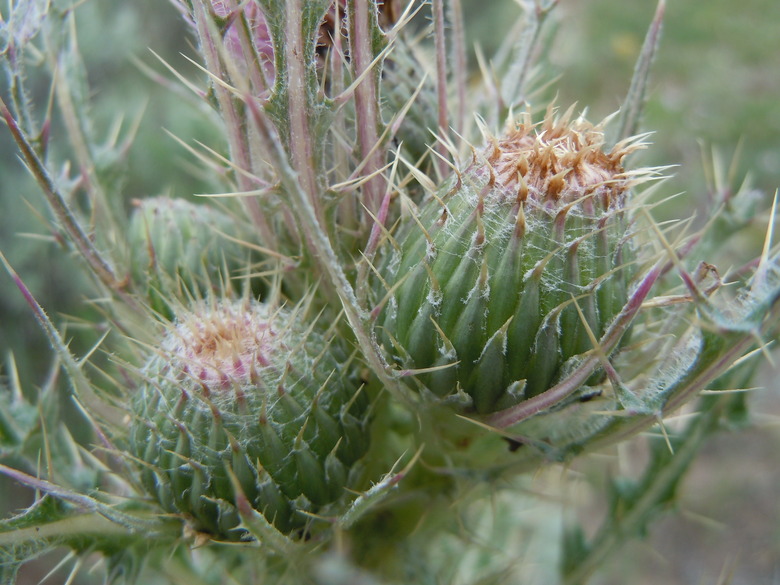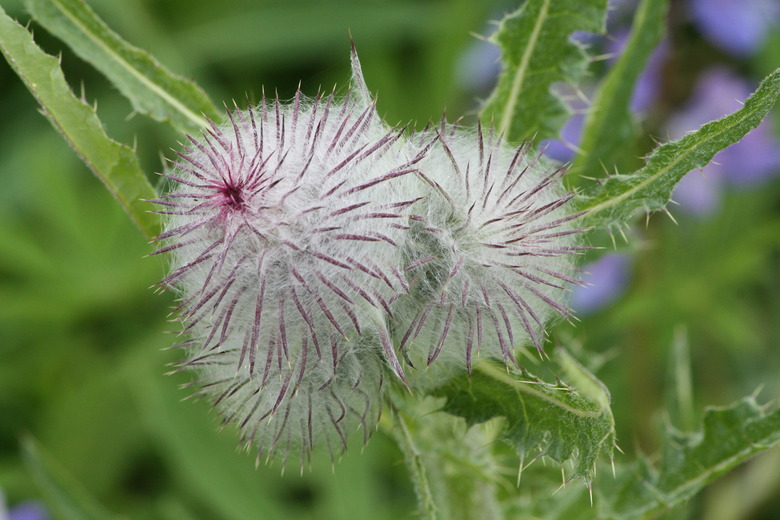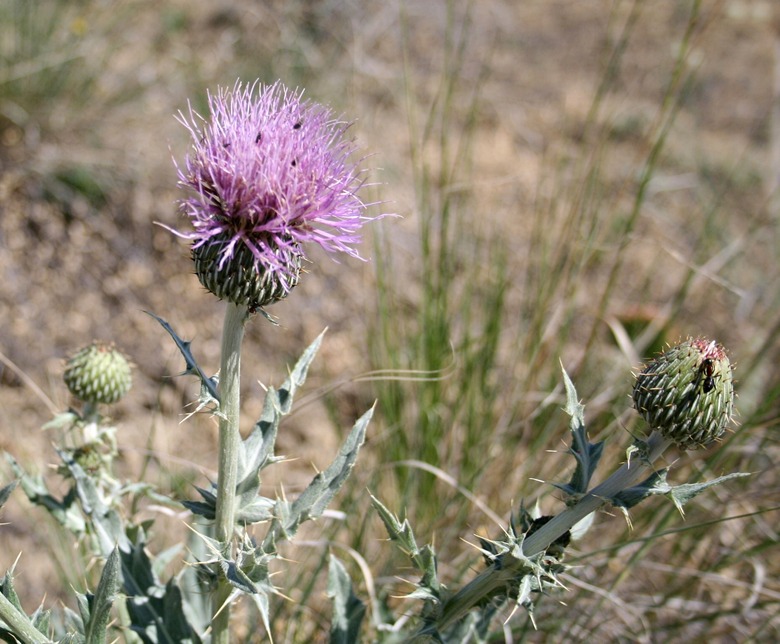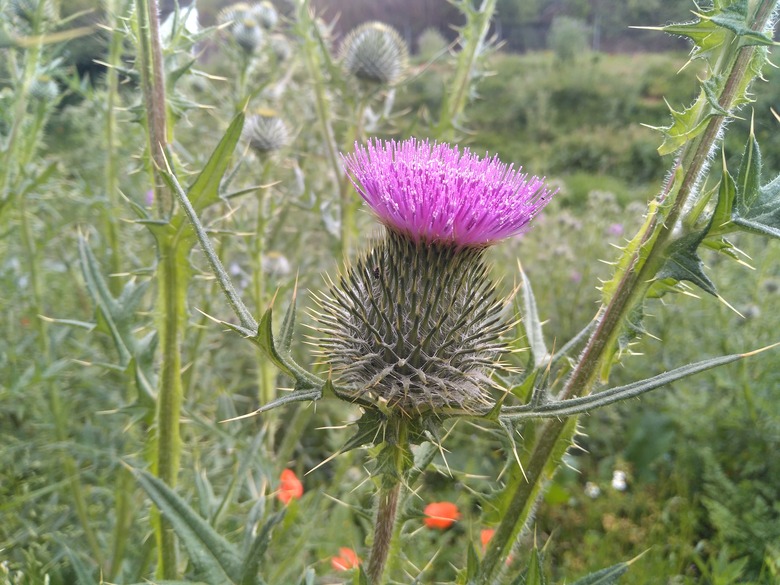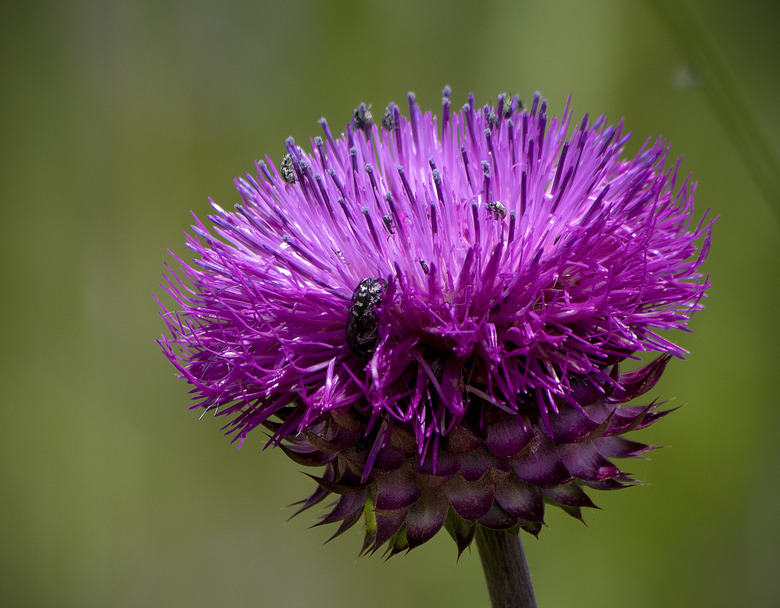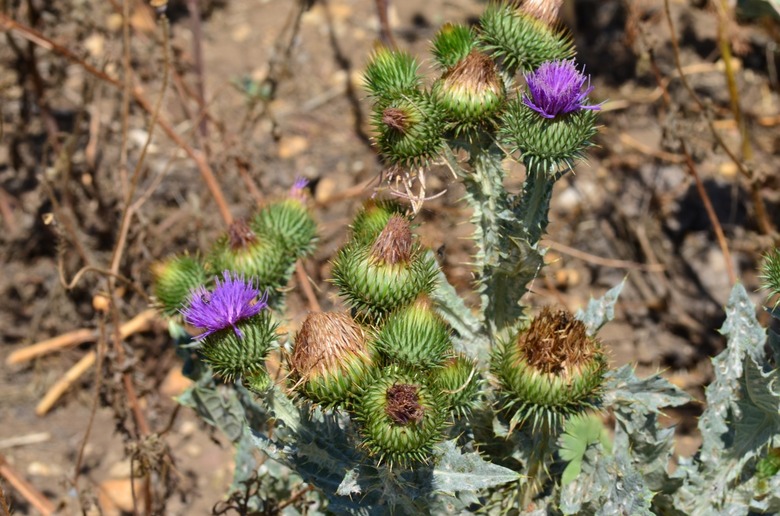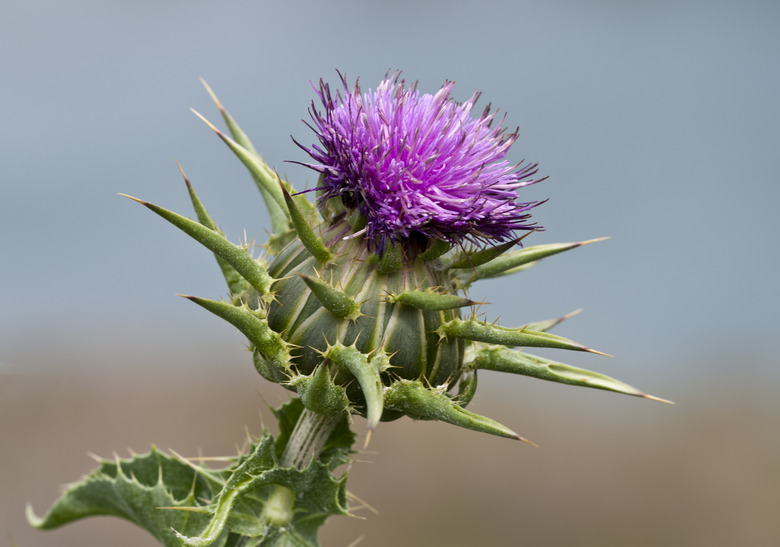How To Identify Thistle
An English rose, a Welsh daffodil, an Irish shamrock and a Scottish...thistle? Unlike the beauty of the rose or daffodil, the weedy, prickly thistle (Cirsium) that stands proudly for an entire nation belongs to a family that is often more reviled than respected.
Native vs. Invasive Thistle
Native thistles, once considered noxious, also exist. Other thistles are considered invasive in many states, and people work hard to eradicate them. Identifying which is which is difficult, but not impossible.
With more than 200 species of thistles around the world, 58 are native to North America, writes the USDA Forest Service. Many states have a robust eradication plan for invasive thistle, with Oklahoma's considered the most strident. Identifying the native thistle is important to the propagation of wildlife, as birds, bees and butterflies feast on the nectar produced by them.
Invasive thistle is difficult to control and reduces wildlife habits and domestic animals' grazing territory. Of the many types of invasive thistle, most respond to chemical control, with the exception of the Canada thistle (Cirsium arvense), which doesn't respond to pulling and cutting and must have several years of chemical control to be eliminated.
Identifying Native Thistles
Let's take a look at some of the native thistle species first.
Clustered Thistle
The clustered thistle (Cirsium brevistylum) is the one of the tallest of the native thistles, growing upwards of 7 feet in the wild. It's considered an annual or a short-lived perennial. Its stems are fuzzy, and the reddish-purple flower atop the stem is shaped somewhat like a cobweb. Its leaves point upward, and some grow past the flower in height.
Edible Thistle
Surpassing the clustered thistle in height, the edible thistle (Cirsium edule) can grow to 9 feet tall with leaves that spread to 15 inches. Similar in appearance to the clustered thistle, its stems are more branched and the leaves spiny.
Fewleaf Thistle and Wavyleaf Thistle
The fewleaf thistle (Cirsium remotifolium) is just that. Its spines are sparsely spaced at the top, and the leaves are wooly, unlike the wayleaf thistle (Cirsium undulatum), which has stems that are matted with white hairs. The flower heads range from pale lavender to white and can reach 2 inches wide.
Tip
Many native thistles face eradication from lack of information regarding their identification, especially when their spines leave them lumped in with weeds.
Identifying Invasive Thistles
Invasive thistles pose a problem to ecologists because they displace native vegetation, decrease wildlife habitat, alter normal ecological processes and reduce recreational uses. The cost of management control of these invasive species amounts to millions of dollars yearly and a decrease in land productivity and land value.
Bull Thistle
The bull thistle (Cirsium vulgare) is a biennial with vase-shaped pink to purple flowers. Its leaf tops are like sandpaper, yet the underside is soft.
Musk Thistle
The musk thistle's (Carduus nutans) powder puff pink flower rises above artichoke-like spiny bracts.
Scotch Thistle
The Scotch thistle (Onopordum acanthium) is unusual in that it features multiple flowers atop the stem and grows to 10 feet tall. And unlike the thistles that thrive in a dry climate, the Canada thistle grows in moist locations. It's also the smallest of the thistles.
Milk Thistle
Milk thistle (Silybum marianum) can be identified by the white marbling on its green leaves and by its bright pink, purple or magenta flowers. These flowerheads have thick, spine-tipped bracts sticking out of the base of the head.
It is mainly cultivated as a medicinal plant; the silymarin is extracted from the milk thistle seeds and included in milk thistle supplements. However, studies have found no research or clinical trials to support its effectiveness in treating cancer.
Yet, it has proved effective in decreasing the side effects of chemotherapy in children, according to the NIH.
Warning
Tread carefully. Thistles can cause painful damage to the feet and hands if their prickly protrusions come into contact with your skin.
